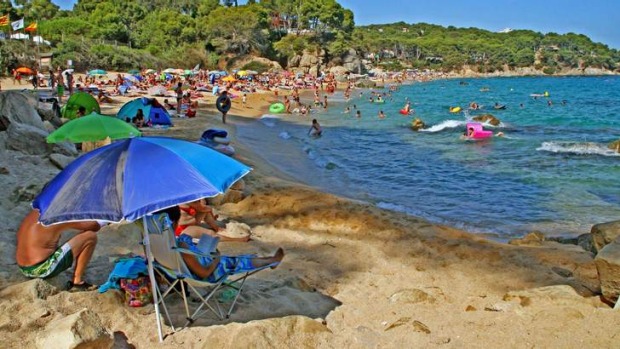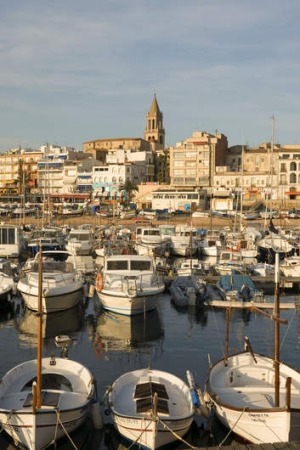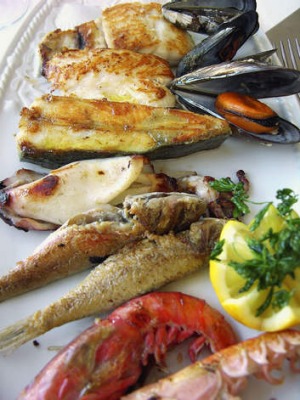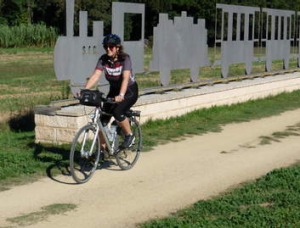
Bike-riding in Costa Brava fuels the appetite, writes Susan Bredow.
Our Hotel Historic at the top of Girona's old town has made a feature wall of the worn and soiled Lycra of cyclists.
The disgraced champion and former guest Lance Armstrong is still revered here, as demonstrated by the pride of place given to his dirty laundry.

The winding hill roads of Spain's Costa Brava are a popular training ground for serious cyclists who base themselves in Girona.
Our bicycle tour of the Costa Brava is less about building stamina for the world's great cycling races than about building an appetite for some of the world's great meals. Girona claims to have more Michelin-starred restaurants than any other place on earth. It is home to El Celler de Can Roca, which is considered the world's best. People book more than a year ahead to eat here.
Within a radius less than 50 kilometres from Girona, we spend six days cycling through lush countryside at the foot of well-preserved mediaeval hill towns. We roll from one unique character-filled hotel to the next - with each kitchen making the most of local produce.

In late autumn, the fields are rich with ripe stuff - grapes, pomegranates, apples, figs, pears, blackberries and olives on age-old trees with thick, gnarled trunks. In local restaurants these ingredients are combined with pork grown at local piggeries and seafood caught fresh along the coast.
The scenery of the Costa Brava is striking, from the rugged coastline for which it is named to the forested hills and fertile farmland.
The bells of Girona's 10th-century Gothic cathedral strike every 15 minutes through the night and our attic room at the Hotel Historic is near enough to ensure we awake early to begin our journey.

Our ride follows the El Carrilet Greenway, a disused train line converted to a cycle and walking trail running from Girona to the coast. The way to Sant Feliu de Guixols is well signposted and we have excellent notes and friendly locals as a back-up. Our local guide Bo is just a phone call away.
Each day Bo arranges for our bags to be transported to the next hotel, which for our second night is Hostal de La Gavina on the beach at S'Agaro. A jetsetter haven in the '60s, today the gracious old hotel is a playground for wealthy eastern Europeans. Ferraris and Lamborghinis in parrot-bright colours line the driveway in contrast to our thirsty, dusty arrival on hybrid bikes from Cannondale.
Like most of our dinners during the next days, tonight's is a degustation of local produce.
From the simplest to the most sophisticated restaurant the food is authentic to the region: duck sweetened with pears, white beans and sausage, cannelloni with salt cod, and crema catalana. Rice cultivation in the area dates back to 1697 and rather than as a paella, rice is served with sausages, cod and sea cucumber.
During the next days we pedal off grand meals cycling through the coastal towns like the charming fishing village of Llafranc, Pals beach and Palamos before heading inland again.
At Pals beach, the Americans built the Radio Liberty towers to broadcast propaganda during the Cold War. The two did the job for 47 years before being demolished in 2006. Today the beachside feels abandoned and the nearby restored hill town also called Pals is far more interesting.
Along the way we stop for lunch where for a dozen euros we sample the "menu", usually three courses and a glass of wine.
There are plates of meat - usually chicken or pork - and fish grilled over corkwood, tripe better than anything we have tasted in Italy, grilled vegetables, big fresh salads with walnuts and goat cheese and soups washed down with local beer and house wines good enough to order again.
Lunches are leisurely, which suits us because dinners don't get going until about 9pm.
Despite being late in the season, some of our days are hot and tiring. One ends with a strong headwind and another with a long uphill pull over cobbled streets in the late afternoon sun.
But each ends with our arrival at an oasis chosen for its excellent decor, friendly and unfailingly good service and fine food. Each day, we ride into our hotel mid-to-late afternoon having covered between 40 to 60 kilometres.
We stay at a converted farm manor, Hotel La Malcontenta near Palamos, the Hotel Mas de Torrent in Torrent and the Hotel La Placa de Madremanya in the mediaeval hill town of the same name. There are many bike paths in a relatively small area. Most are dirt tracks running through agricultural land and alongside irrigation canals servicing the region's rice paddies.
We travel at speeds between 10km/h and 20km/h but this leisurely pace gives us time to take in the sights, sounds and smells. We don't often find ourselves on paved roads but when we do passing motorists slow down and give us a wide berth. Some stop to offer directions, apparently oblivious to the fact we have little knowledge of Spanish.
Near the fishing village of Calella, we detour up a valley to Celler Can Sais, a 300-year-old family-run winery producing well-regarded organic wines from just 12 hectares of grapes. The same day we take a challenging uphill route along a bouncy forest track to the botanical gardens of Cap Roig. Here more than 1000 plant species grow on 17 hectares cascading to the sea.
In Pubol we visit Gala Dali Castle, the eccentric home of artist Salvador Dali's wife. After she died Dali illegally drove his wife's body back here to be buried.
We don't tire of the charm of the old towns despite them being on hilltops and a strenuous climb to reach. The few cars in these places bear the scars of navigating streets made when nothing wider than a donkey needed to pass. We cycle across a variety of landscapes yet venture a relatively small distance from the start. Our last stop in mediaeval Madremanya is just 20 kilometres from Girona. On our last night we have one our best meals with most of the vegetables for the eight courses coming from the hotel's kitchen garden.
The next morning I am almost sorry to hand back my rental bike. This is a fine way to travel - not too slow but slow enough to take in all that's around you.
After our idyllic days in the Spanish province, Catalonia's capital, Barcelona, seems awfully loud and fast-moving.
The writer travelled at her own expense.
TRIP NOTES
GETTING THERE
Singapore Airlines has a fare to Barcelona for about $2120 low-season return from Melbourne and Sydney including taxes. Fly to Singapore (about 7hr) and then to Barcelona (14hr); see www.singaporeair.com. Opened early in 2013, the fast train takes just 38 minutes at speeds of more than 250km/hr to travel the 100km from Barcelona Sants station to Girona.
TOURING THERE
Pure Adventures has self-guided cycling tours of the Costa Brava from late March to the end of October. Prices start at $1820 for seven nights, including accommodation and most meals.
Start days, tour lengths and routes can be tailored to suit. Ours was the Costa Brava Deluxe. See Pure-adventures.com.
MORE INFORMATION
spain.info